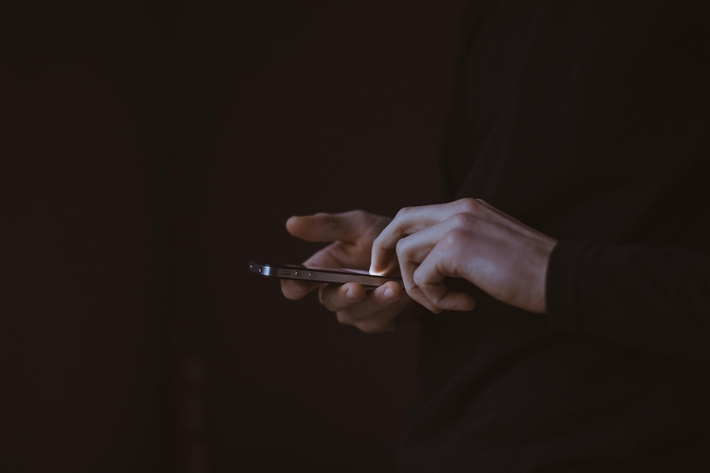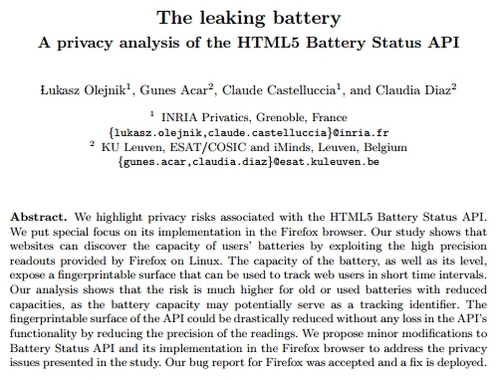*content reproduced with permission from appzbizz.com

Image via Pexels.com
Mobile devices are often presented as a miniaturized desktop or laptop computers. The next step of the evolution. Why? Because a mobile phone or tablet - in addition to everything your desktop of laptop has - is also packed with sensors provide a lot of inputs a clever developer can use to create new services or products.
Think of the fact that just the addition of Location data to a computer kicked the mobile revolution into high gear and you start to realize just how powerful sensor can be in creating new and exciting ecosystems. At the same time, only after location data become ubiquitous we realized just how much can be extrapolated from it and to what unexpected ends this data stream can be used with malicious intent.
In a nutshell, each and every new sensor we add to our smartphones is a tremendous gain AND a privacy threat.
Categories of sensors on mobile device
Conceptually, there are five categories of sensors (even though most documentation sites and tutorials mention just the first three, with some acknowledging composite sensors):
- Device position - gather information about the position of the device. Examples: orientation sensors, magnetometer
- Motion sensors - detect changes in forces around the three axes of the device. Examples: gyroscope, accelerometer
- Environmental sensors - focus on information about the device environment. Еxamples: ambient temperature sensor, light detection sensor, humidity sensor, barometer, etc.
- Mixed or composite sensors - gather and integrate data from two or more sensors on a device. Examples: step counter, rotational vector sensor
- Internal sensors - detect and report changes related to the device itself. Examples: battery charge
Using base sensors or composite sensors, developers can generate complex apps that can be aware of their environment, special input, and actions from users.
Misusing or malicious use of sensor data
With great power comes great responsibility (or lack thereof).

It was in this context that I stumbled (literally and metaphorically) over Lukasz Olejnik’s name about a year ago when a number of media outlets reported things like "HTML5 privacy hole left users open to tracking for three years" or "Smartphone and laptop batteries compromise web browser privacy, suggest security experts" or yet "How your smartphone's battery life can be used to invade your privacy".
Note: If you are interested, the original report "The leaking battery A privacy analysis of the HTML5 Battery Status API" can be read here.
Looking for the epicenter that generated the whole commotion it wasn’t difficult to find Olejnik’s own blog; a valuable find, indeed. Just take the most recent post published - Privacy analysis of Ambient Light Sensors. According to Olejnik’s analysis:
"Ambient Light Sensors may introduce non-obvious and unexpected information leaks. In particular, it could possibly allow to map the inside of a building. This would be feasible provided that (1) ambient light levels could be read with sufficient precision, and (2) assuming that different rooms are lit differently. Additionally, it might also be possible to detect the orientation of the user's house or apartment (example: it is bright in the morning, so windows face east!)."
"...If it's possible to map the user's home arrangement, this information could be potentially possible to discover its size, number or rooms, etc. Such information is related to the user's financial situation, and consequently it would lead to a profile the user - allowing to assign him to a particular category such as "this user has a large house, he is wealthy".
Beyond its importance for Security, Privacy & Tech Inquiries, one thing comes powerfully across - just how defining are sensors for the mobile devices. In a sense they carry the burden of innovation. The moment some other mobile device (e.g. google glass) will manage to incorporate the mobility and the sensors our current smartphones and offer a better user experience and more convenience will be the moment another revolution will start.
Meanwhile, one thing should be crystal clear - this is the Age of Mobile Devices, hence it is the Age of Mobility and Sensors. Businesses that can find innovative and compelling use-cases for the sensors suits mobile devices have will lead the pack. Even if you do not hold such ambitions for your own business, you should take care not to be left behind the pack. Try out our demo app to get a good idea of how our features come together to build a vigourous business app.
Get an app now!






Posting comment as guest.
If you already have an account, please LOGIN.
If not, you may consider creating on. It’s FREE!